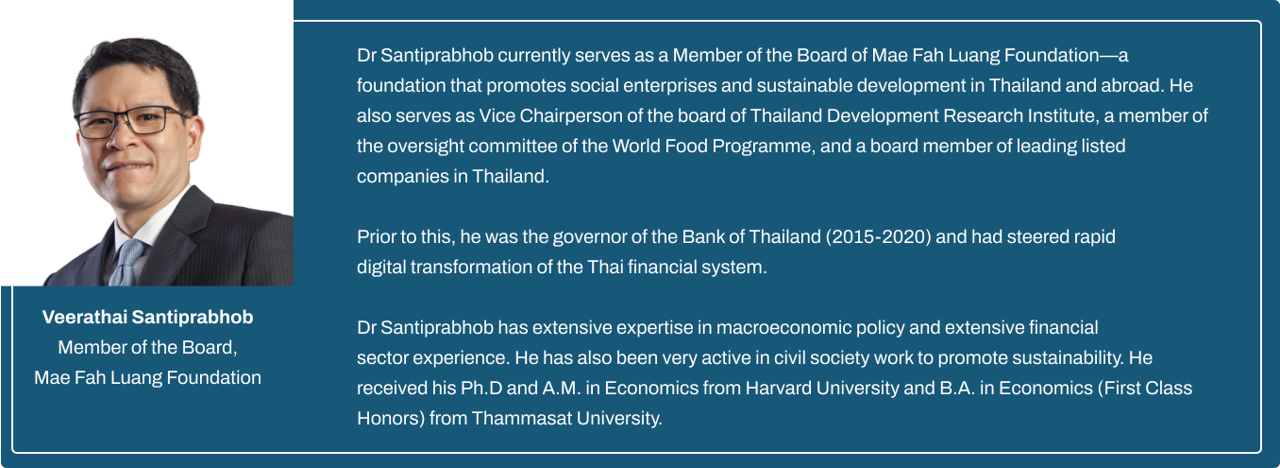In 2019, Singapore-based renewable energy firm The Blue Circle issued a US$40 million green bond to finance wind power projects in Cambodia. The bond was the first certified climate bond issued in Cambodia that highlights the potential for green investments in the Southeast Asian region. In 2021, Singapore's DBS Bank then issued a US$800 million sustainability bond, the first of its kind issued by a financial institution in Southeast Asia for financing renewable energy, green buildings, and sustainable water management projects.
Slowly but surely, the path towards investment in low carbon economic growth and more climate-resilient economies in Southeast Asia is opening. With a population of 622 million people and a projection of becoming the world’s fourth largest economy by 2030, the region is experiencing a surge in energy demand due to its expanding economies and growing populations.
Moving towards green finance
To narrow the gap between the demand and supply of sustainable investments, Southeast Asia is turning to green finance as a powerful tool to mobilize capital for green projects across the region. According to the ASEAN Capital Markets Forum, the total value of green bonds issued by ASEAN issuers was US$3.3 billion in 2018, a 68% increase from 2017. This momentum continued into 2019, with the first half of the year recording US$2.8 billion worth of green bonds issued.
The growth of ASEAN's green bond market has been driven by several factors, including regulatory support as well as the rising demand for investments in energy efficiency to address the lack of project financing in high carbon emitting sectors. Moreover, Southeast Asia is well positioned to attract green bond investors given its significant renewable energy potential, with countries such as Indonesia, Thailand, and Vietnam offering tremendous opportunities in wind, solar, and hydropower projects.
One booming sector with huge investment potential is the building and construction sector. The building sector is a major energy consumer with massive potential for energy efficiency projects. While the sector accounts for 30% of final energy use, less than 9% of financing in building construction and renovation has been spent on energy efficiency projects. In Singapore, green buildings yield a higher return on investment than traditional buildings.
The stage is set
Yet, despite the fact that green bonds enjoy high levels of institutional support in Southeast Asia, green bond issuances in the region are still relatively low compared to the global market. If this is the case, why should the world then pay attention to Southeast Asia’s green bond market? This is because Southeast Asia is surging ahead to ensure the region satisfies the four preconditions for a thriving and impactful green bond market.
Firstly, Southeast Asia has a strong demand for the financing of projects with environmental benefits. Using Vietnam as a case study, based on market momentum and the renewables targets set in the latest draft of Vietnam’s Power Development Plan, demand for financing these projects will continue to grow
exponentially. Wind and solar assets will be commissioned to meet these targets – and these projects will need to be funded, creating more opportunity for a green-financing market to develop.
Next, ESG finance products need to benefit banks and investors. In other words, banks and investors need to be confident that they will not lose out by creating and investing in these products. Following from the case study of Vietnam, Vietnam’s banks could realize a total of $1.7 billion in revenue from ESG financing by 2025, with around 90% coming from transition finance and green bonds.
Moreover, there is a need to build a legal framework and for banks to respond to the first three points proactively to creatively establish a green bond market. In 2018, Vietnam declared all banks must take internal steps to consider environmental risk by 2025. Even in Indonesia, Indonesia’s Bank Negara Indonesia (BNI) issued a US$150 million green bond in 2020 – the first green bond to be issued by an Indonesian bank expected to help the nation reach its goal of reducing greenhouse gas emissions by 29% by 2030.
Sustainable finance beyond Asia
Given the potential of Southeast Asia’s green bond market, Singapore has a unique and strategic opportunity to capitalize on its regional leadership to drive the development of Southeast Asia’s green bond market. By doing so, Singapore can help mobilize capital for green projects across the region and position itself as a hub for green finance in Southeast Asia, attracting green investors and supporting the growth of sustainable development in the region.
Beyond the lenses of Singapore, the development of Southeast Asia’s green bond market is an important step towards building a sustainable future for the world. It provides investors beyond Southeast Asia with opportunities to support environmental and social goals in the region while generating returns and supporting the transition to a low-carbon economy.
The emerging promise of Southeast Asia's green bond market is a beacon of hope for investors looking to align their investments with their values. The market for green bonds in the region is growing rapidly, with an increasing number of companies and governments turning to this financing mechanism to fund their sustainable projects. However, navigating this relatively new frontier of sustainable investing requires a nuanced understanding of the market and its unique challenges.
As we continue to prioritize sustainability and responsible investing, we have the potential to drive real change in the region and create a more equitable and sustainable future for all. The growth of Southeast Asia's green bond market is a positive development in the world of sustainable finance, and one that holds great promise for the years to come.
Posted 12/09/2023

















3 months ago
H